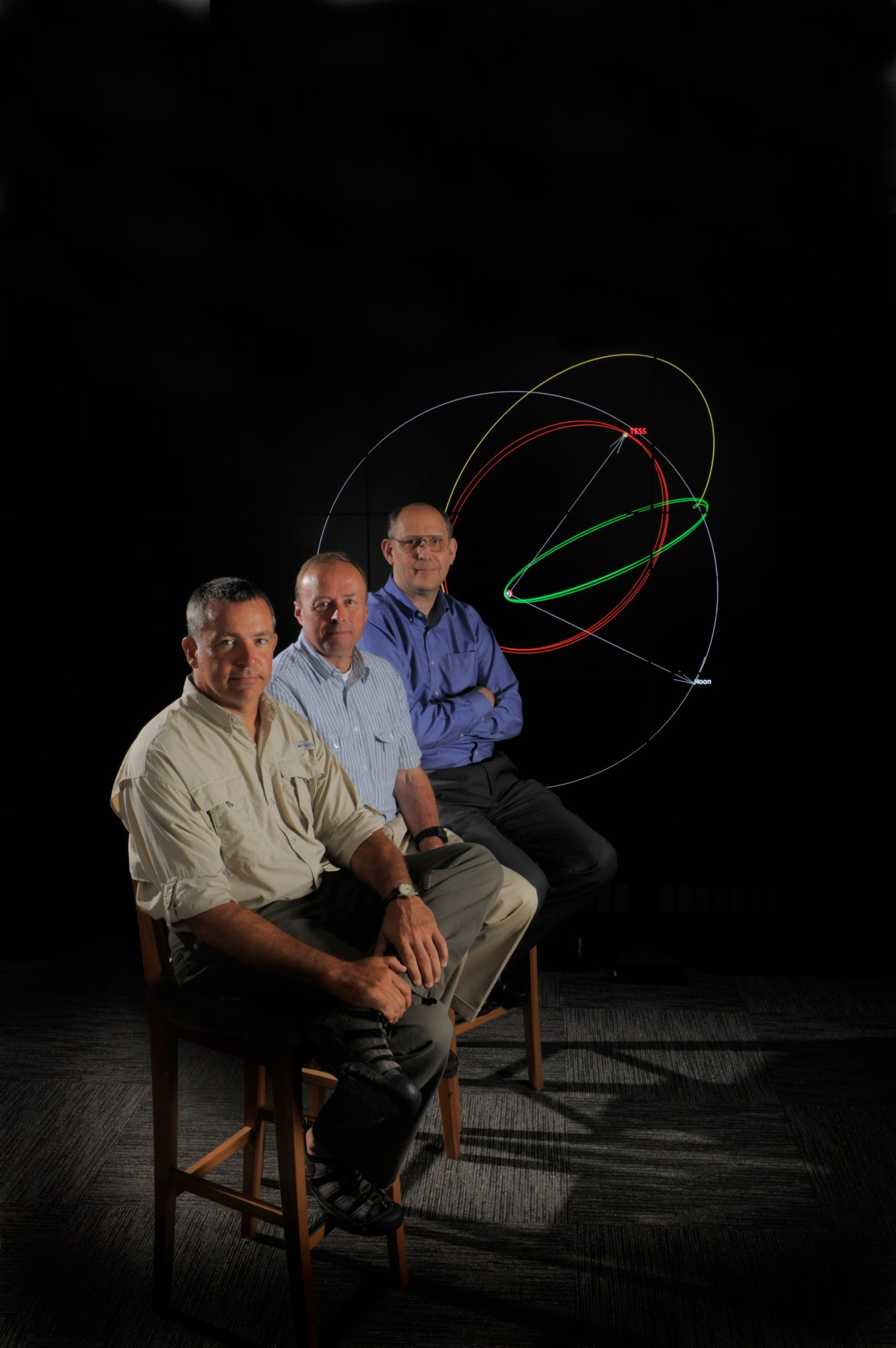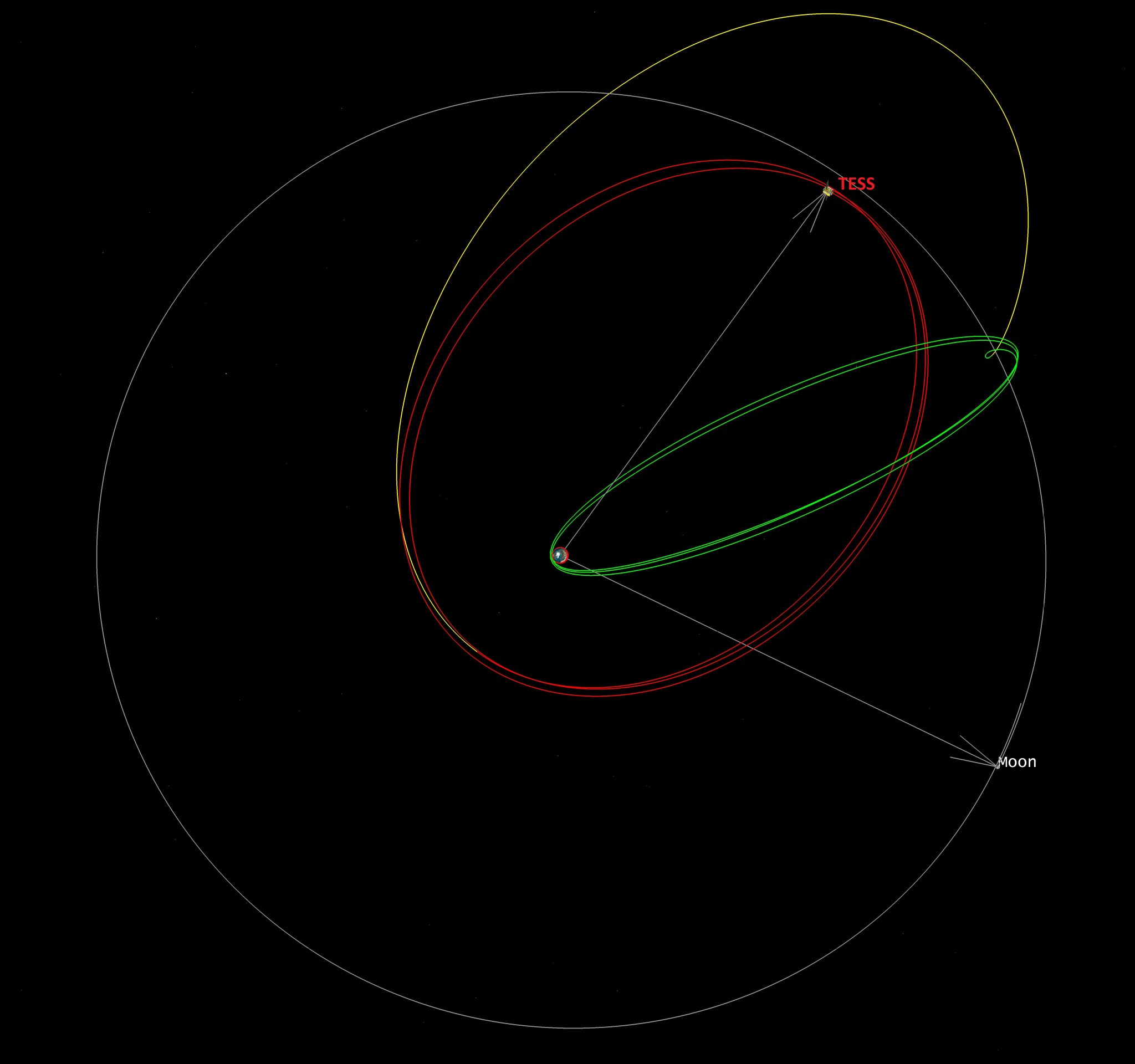Principal Investigator George Ricker likes to call it the “Goldilocks orbit” — it’s not too close to Earth and her Moon, and it’s not too far. In fact, it’s just right.
And as a result of this never-before-used orbit — advanced and fine-tuned by NASA engineers and other members of the Transiting Exoplanet Survey Satellite (TESS) team — the Explorer mission led by Ricker will be perfectly positioned to map the locations of more than 500 transiting exoplanets, extrasolar planets that periodically eclipse each one’s host star. When the two-year mission begins in the 2017-2018 timeframe, it will represent the first time NASA has examined a large number of small planets around the brightest and closest stars in the sky.
Previous sky surveys with ground-based telescopes have mainly detected giant planets, while NASA’s Kepler observatory has uncovered the existence of many smaller exoplanets, but their host stars are faint and difficult to study.
TESS, which NASA recently selected as a new Explorer mission, will use an array of wide-field cameras to perform the all-sky survey of a broad range of exoplanets, ranging from Earth-size to gas giants.
From this survey data, NASA’s James Webb Space Telescope as well as large ground-based observatories will be able to further characterize the targets, making it possible for the first time to study the masses, sizes, densities, orbits, and atmospheres of a large cohort of small planets, including a sample of rocky worlds in the habitable zones of their host stars.
“TESS will carry out the first spaceborne all-sky transit survey, covering 400 times as much sky as any previous mission,” said TESS Principal Investigator Ricker, a senior research scientist at the Massachusetts Institute of Technology’s (MIT) Kavli Institute for Astrophysics and Space Research. “It will identify thousands of new planets in the solar neighborhood, with a special focus on planets comparable in size to the Earth.”
Ricker’s winning team also includes NASA’s Goddard Space Flight Center, Greenbelt, Md., which is managing the mission; MIT’s Lincoln Laboratory, Lexington, Mass.; Orbital Sciences Corporation (OSC), Dulles, Va.; NASA’s Ames Research Center, Moffett Field, Calif.; the Harvard-Smithsonian Center for Astrophysics, Cambridge, Mass.; The Aerospace Corporation, El Segundo, Calif.; and the Space Telescope Science Institute, Baltimore, Md.
“This is a great mission and it stands on its own merits,” added Tim Sauerwein, who managed the TESS proposal effort at Goddard. “I certainly don’t attribute the win solely to the orbital analyses performed by our team, but I strongly believe they contributed. This orbit is absolutely ideal for this mission.”
Special Orbit Required
To carry out an exhaustive two-year survey of extrasolar planets in both celestial hemispheres, TESS needed to occupy a very particular position in space, a highly stable place that maximized sky coverage and gave the observatory a mostly unobstructed view of the cosmos, all from a low-radiation, thermally benign environment.
After exhaustive studies by Goddard engineers and The Aerospace Corporation, the TESS team chose a never-before-used lunar-resonant orbit known as P/2 in the parlance of scientists. This high-Earth, highly elliptical orbit has a period half that of the Moon’s orbital period, meaning that the satellite makes a complete orbital circuit every 13.7 days.
When the spacecraft is at the lowest point closest to Earth at 67,000 miles (17.0 earth radii), it remains well above geosynchronous orbit 22,236 miles above the equator where most communications satellites operate. At this lowest point, or perigee, TESS will orient its dish antenna to Earth and transmit data to ground stations below, a process that will take three hours. At its highest point, or apogee, some 232,000 miles above Earth (58.7 earth radii), it avoids the hazards posed by the Van Allen radiation belts, which extend from about 621 to 37,282 miles above the surface.
“This is the first time this orbit has been used,” said Trevor Williams, a Goddard engineer who played a pivotal role in evaluating the trajectory’s appropriateness for the TESS mission. “It’s a stable orbit, stable in the sense that it isn’t plagued by attitude perturbations.”
Papers Pave Way
Although lunar-resonant orbits were first discussed in the early 1990s, TESS’s particular trajectory was based on the original work of Goddard contractors Daniel McGiffin and Michael Matthews, both from the Computer Sciences Corporation in Lanham-Seabrook, Md., and Goddard engineer Steven Cooley. In 2001, the team published a paper describing their research into lunar-resonant orbits and explaining why they were ideal for a range of space missions.
Specifically, the paper reported that at lunar-resonant orbits, perturbations from the gravitational tug-and-pull exerted on spacecraft by the Moon and Earth are roughly zero, especially if the spacecraft’s apogee is about 90 degrees with respect to the Moon. As a result, these highly elliptical high-Earth orbits offer long-term stability for spacecraft. Once a satellite reaches the trajectory, few, if any, station-keeping maneuvers are required to keep it there — a particularly attractive option for mass-constrained spacecraft that can’t carry propellant to periodically power thrusters to maintain an orbit.
In 2010, two members of the TESS team — OSC’s Jose Guzman and Robert Lockwood — realized the importance of the 2001 Goddard paper. They suggested to Ricker, who already was searching for a way to provide TESS with an uninterrupted view of the cosmos, that the mission consider using the P/2 orbit. Ricker agreed, tapping Goddard engineers Dave Quinn and Mark Woodard to calculate the preliminary orbital maneuvers required to place TESS into its final P/2 orbit.
Then in 2011, Goddard engineer Donald Dichmann, who at the time worked for Applied Defense Solutions in Columbia, Md., and his co-authors began work on a paper reviewing the trade studies NASA made when it decided to move its Interstellar Boundary Explorer from its original orbit to a more stable position at another lunar-resonant orbit — P/3 — where it’s mapping the boundary between the solar system and interstellar space. In their paper, which was published in 2012, Dichmann and his co-authors concluded that it “would be interesting to examine” other lunar-resonant orbits like TESS’s P/2 orbit.
“Ricker saw that paper and said ‘let’s repeat that refined stability analysis for the TESS orbit,’” Dichmann recalled.
Months-Long Study
During TESS’s Phase A study in 2011-2012, additional members of the Goddard’s world-renowned Navigation and Mission Design Branch joined forces with Ricker and began a months-long investigation examining the details of the P/2 orbit and the precise maneuvers needed to deliver TESS to this “distinctive orbit.”
The evaluation by the combined TESS team, involving sophisticated orbit-determination tools, confirmed that the orbit offered a relatively clear view of the cosmos, good visibility of ground stations, little contamination from straylight, and a benign, low-radiation environment — all important ingredients for a productive all-sky survey cataloguing extrasolar planets around bright stars. Just as important, the team concluded that once TESS reached its P/2 orbit — through a series of maneuvers also involving a lunar flyby to gain momentum from the Moon’s gravity — it would remain stably in that orbit for several decades.
Further analysis funded by Goddard’s Internal Research and Development program revealed that the orbit afforded a far greater number of actual launch days than originally envisioned. “One of the most significant things we accomplished, and Trevor (Williams) played a key role, was determining that, at its farthest point, the spacecraft-Earth-Moon angle doesn’t need to be 90 degrees, but can vary as much as 30 degrees from that and still provide a stable orbit,” said Chad Mendelsohn, a Goddard engineer involved in the orbit studies.
As a result, the mission will enjoy many more launch opportunities. In fact, in any given 27-day lunar cycle, the TESS team will be able to launch on 23 of those days. “We relaxed the orbit constraints and really opened up the launch window,” Mendelsohn said.
Indeed, TESS will take advantage of a number of innovations, one of the most significant being it’s never-before-used orbit, Ricker said. “For TESS, we were able to devise a special new ‘Goldilocks’ orbit for the spacecraft, one which is not too close, and not too far from both the Earth and the Moon,” Ricker said.
For more NASA Technology News, visit:




























